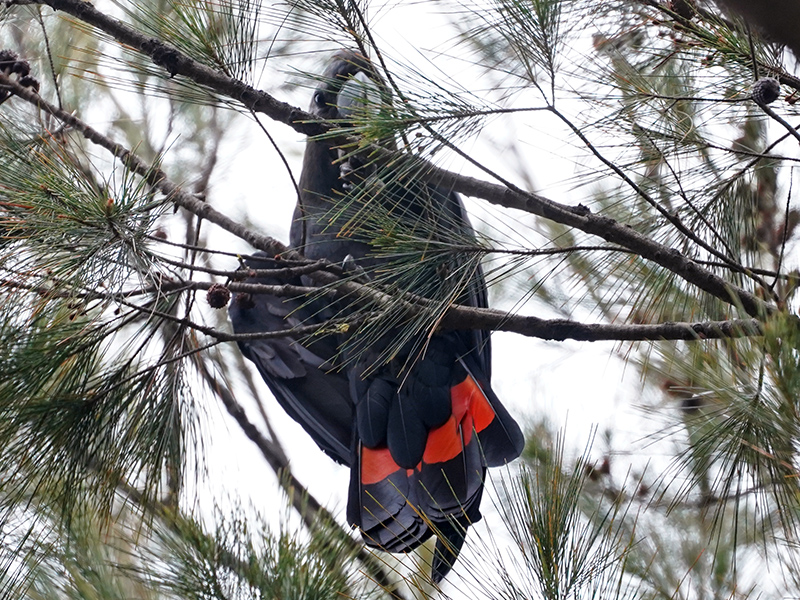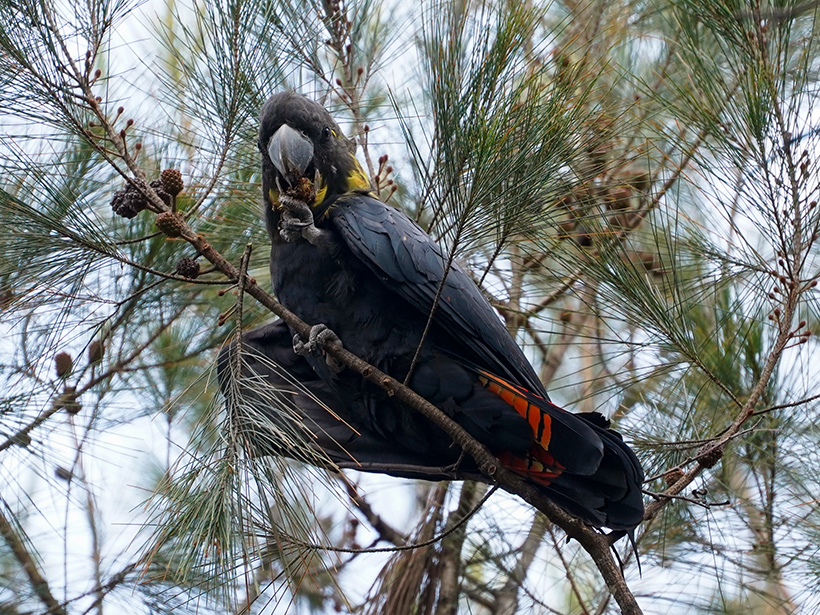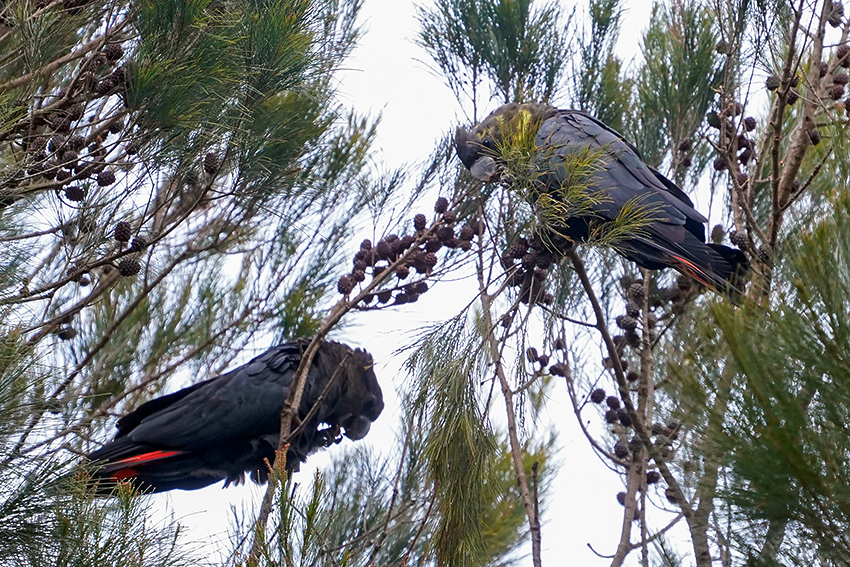A couple of posts back, I described a lyrebird who took a bath in a stream, preened extensively, and then set himself up on a tree overlooking the Jamieson Valley in Australia’s Blue Mountains. I compared the overlook to a cloud, in the light of the soft pillow of needles from casuarina trees on the ground. I went back to the same place the next week, hoping for lyrebirds, and found in those trees a pair of the greatest of all lovers of casuarinas – Glossy Black Cockatoos.
These are large parrots, who I’ve only ever seen in pairs, and only in casuarinas. They eat the seed pods of those trees – exclusively? near-exclusively? I am not sure. They tend to sit high in the tree and are not easy to see. Every time I’ve encountered them, in fact, it has been the same way. I was walking down in the valley a few years ago and unexpectedly found myself being showered with fine debris, with casuarina stems and bits of seed pod. I looked up and saw my first GBCs. Since then, I’ve learned to watch for those showers and, especially, listen for a gentle clicking chomp from those trees.
I’ve become a little obsessed with these birds, both because of something about how they hold themselves and interact, and, more especially, because of the extraordinarily beautiful feathers on the females. At the top of this post is my best photo of a female. The males do have some red on the tail, but without those bands, and they also have a plainer, dark head.
I have fewer photos of males because I spend so long trying for glimpses of those feathers on females. They’re not visible most of the time. I stand below as they eat, shift, and adjust, and ever now and then, some movement unfurls them.
The males are great, too, but just not the same.
As I said, I’ve only ever seen pairs (and not too many of those – these photos are collected from about three long periods spent standing under trees, and occasionally slipping down hillsides through what has so far been snake-free undergrowth). They dine at length and then leave to roost, near sunset. I’ve seen the departure a few times. They will start gently calling to each other, in a gentle cheep, shift about and apparently consider, and then fly off simultaneously.
They are a threatened species – only around 8000 are estimated to remain.
__________
Notes: A good website is devoted to these birds, here.






